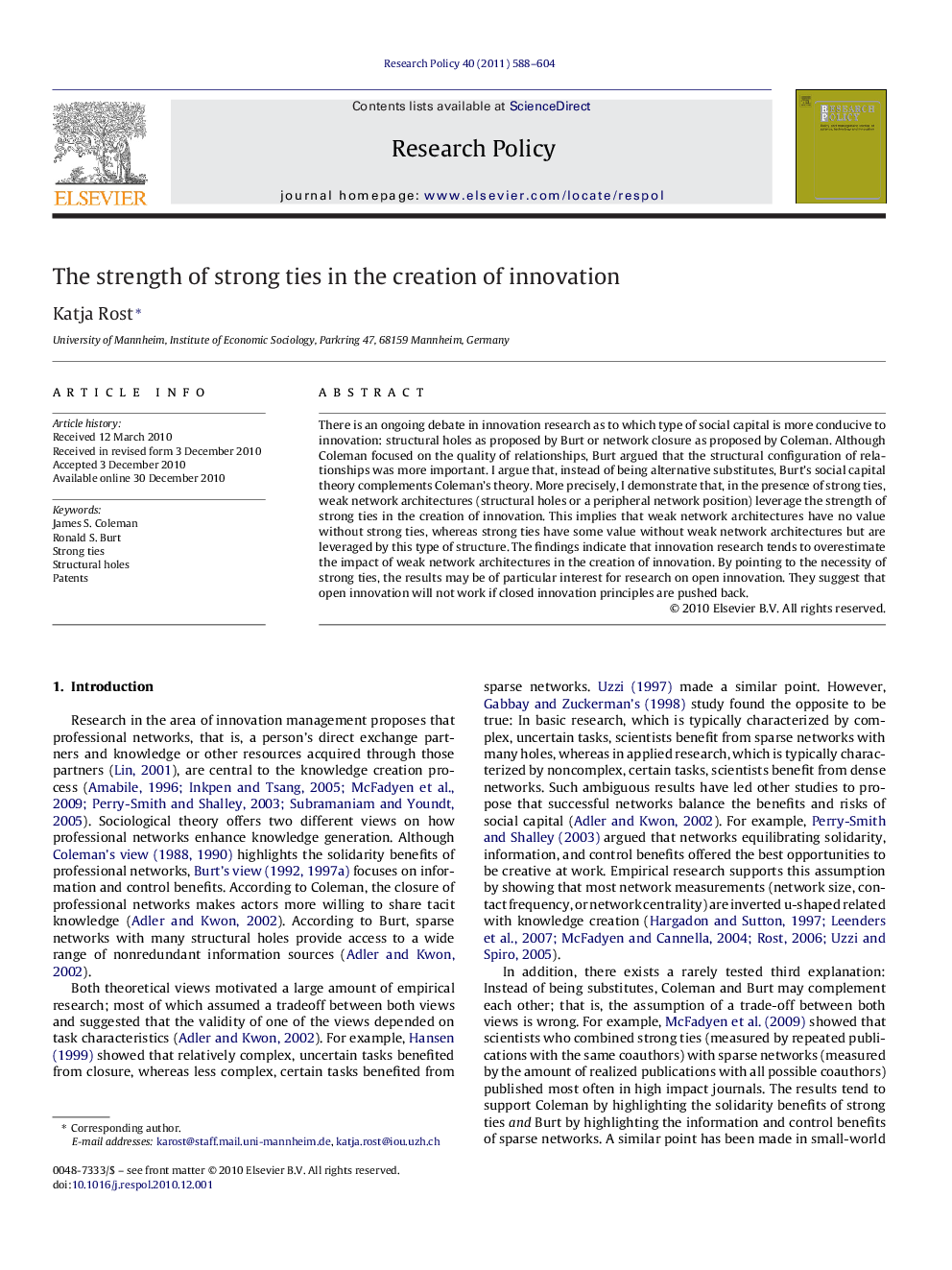| Article ID | Journal | Published Year | Pages | File Type |
|---|---|---|---|---|
| 984111 | Research Policy | 2011 | 17 Pages |
There is an ongoing debate in innovation research as to which type of social capital is more conducive to innovation: structural holes as proposed by Burt or network closure as proposed by Coleman. Although Coleman focused on the quality of relationships, Burt argued that the structural configuration of relationships was more important. I argue that, instead of being alternative substitutes, Burt's social capital theory complements Coleman's theory. More precisely, I demonstrate that, in the presence of strong ties, weak network architectures (structural holes or a peripheral network position) leverage the strength of strong ties in the creation of innovation. This implies that weak network architectures have no value without strong ties, whereas strong ties have some value without weak network architectures but are leveraged by this type of structure. The findings indicate that innovation research tends to overestimate the impact of weak network architectures in the creation of innovation. By pointing to the necessity of strong ties, the results may be of particular interest for research on open innovation. They suggest that open innovation will not work if closed innovation principles are pushed back.
